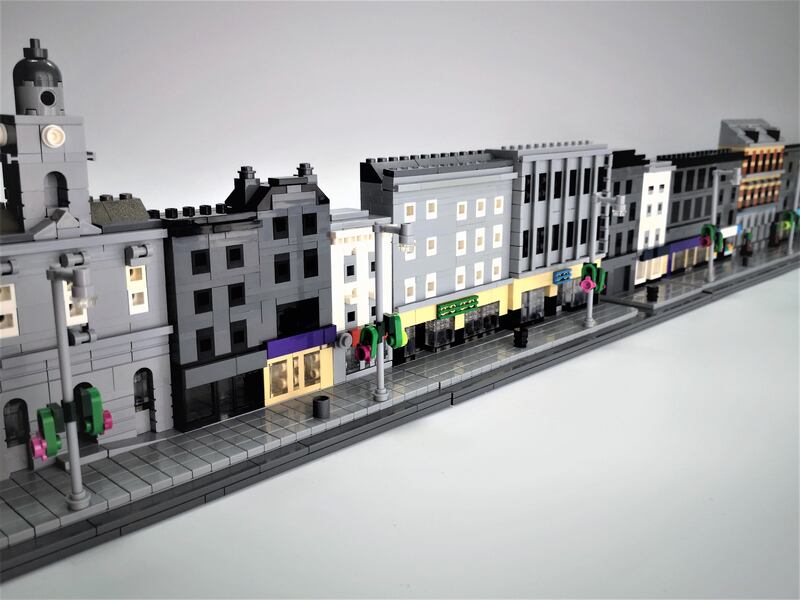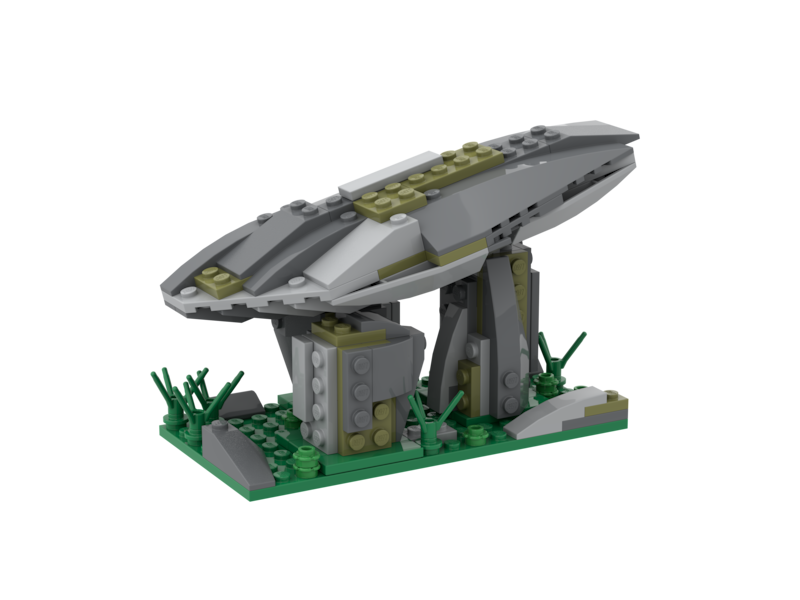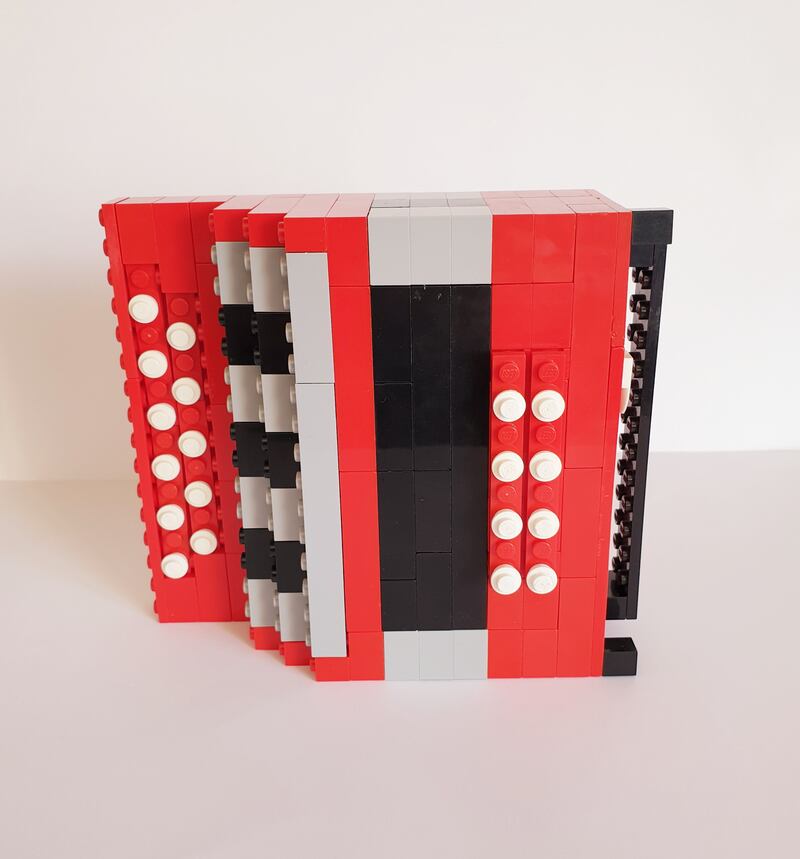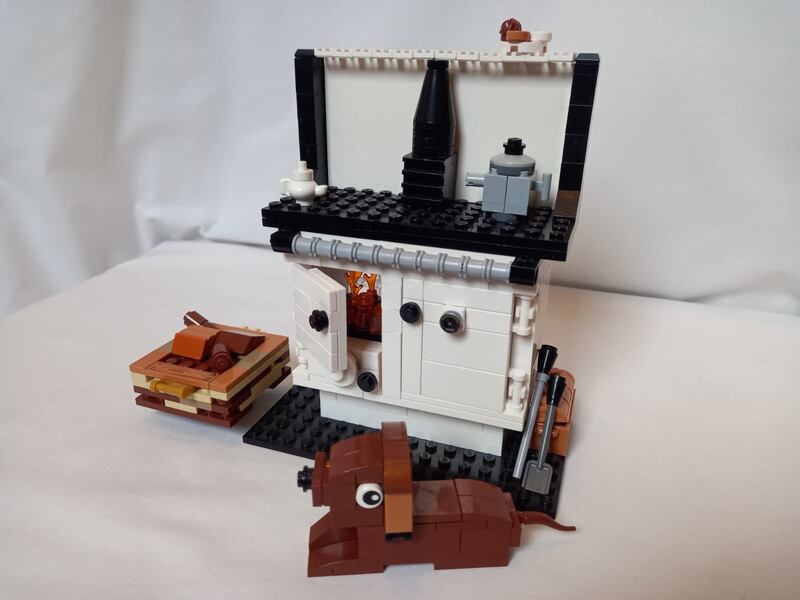What is our built heritage, why is it important and how can engage children with it? Heritage at Play is one creative approach. Conceived during the quieter days of Covid to entertain and engage children through the medium of Lego, while simultaneously exploring their heritage and relationship with Ireland’s towns and other cultural artefacts, it speaks to children – especially those under the age of 10 – in a language they fully understand.
That language is Lego, the Danish plastic brick that has been used to construct all manner of ideas and includes a range of instructions as to how to recreate some of the county’s most identifiable landmarks.
“It occurred to me that Lego was an ideal medium for children to explore their heritage, interpreting it as built, national or cultural heritage,” explains Lorcan Scott, a wildlife officer with The Heritage Council who developed the project and a children’s competition in collaboration with Lego brick artist Jessica Farrell.
The competition, now in its fourth year, is called Heritage at Play and asks children of varying ages to imagine their own built environment and its heritage elements through the medium of the humble plastic building block.
READ MORE
Farrell is Ireland’s only female Lego brick artist and has been the judge of Heritage at Play since its inception. What she is seeking from participants is entries that fuse creativity with personal observations. With a lineage of four generations of female artists, she finds working with Lego and children deeply fulfilling.
“Lego bricks give children a familiar medium in which to express themselves. Heritage at Play has evolved beyond being just a competition; it’s become a larger conversation about heritage, using Lego bricks as the language and reaching children who may not otherwise be engaged,” she says.

Farrell also hosted a series of workshops to look at West Street in Drogheda during Heritage Week in August. In collaboration with the Museum of Childhood Ireland and Collaborative Town Health Check, she created a full-scale Lego model of West Street. She used the project to highlight underutilised properties, which she built in grey brick to distinguish them from the buildings in active use illustrated in bright colours.
This inspired mature and thoughtful ideas from children, ranging from suggestions for community centres for Ukrainian residents to meet and discuss home, to the idea of a homeless centre providing hot drinks, says Farrell. The effort empowered children to envision how their town could be utilised differently, from the addition of more greenery and recycling bins to more open spaces for communities to gather, opening up young minds to the world around them and helping to foster civic-mindedness.
“Beyond even what the children are saying, the fact that they’re being asked what they think is important because everybody who volunteers or gets involved with their community has something that kick-starts them into being interested,” she explains. “Oftentimes, it’s something they remember from childhood, where somebody sparked their interest or listened to them.”
Farrell sees both Heritage at Play and the Collaborative Town Health Check projects as launch pads for future engagement with children.

The competition has delivered original and beguiling Danish brick interpretations of how Ireland’s built landscape looks to children. To help launch it and tickle the kids’ imaginations, Farrell created a series of designs, all landmark structures that span millennia, including a dolmen, St Kevin’s kitchen, a high cross, a parish pump and a vernacular cottage. And anyone with a box of Lego bricks can construct them at home – step-by-step instructions are available to download on The Heritage Council website.
“Though simple, the competition had a remarkable reach. Some children produced ideas that wouldn’t have crossed my mind. We also reached many non-national children who shared their perspective on our heritage,” says Scott.

Children’s fresh eyes often see a different Ireland and the spectrum of their creations submitted is broad. There have been traditional musical instruments, such as a button accordion made by Shane Tormey – a runner-up last year – and a model of a high cross of the kind that dot fields and gravestones throughout Ireland. There has also been a larger-than-life-sized version of President Michael D Higgins – another runner-up – by Danny Murphy. Red squirrels and the Guinness Store House have featured too.
Even the weathered buildings in the hearts of our towns, yearning for rejuvenation, are embraced. Luke Moloney, winner in the eight-12-year-old category of the competition last year, created a model of Kinsale that incorporated some of the lore of the picturesque Co Cork town. Luke’s dad is a local historian and tour guide and Farrell believes this helped shape his creative thinking.
“Luke hears all the stories about Kinsale and his model was inspired by his favourite, the Kinsale Giant, shown as a mini-figure with extra legs! The colourful buildings are the brightly painted architecture of Kinsale and the structure on the right is a church – he cleverly used spaceship elements to make the steeple,” she says.

The young artists are encouraged to infuse their models with personal significance. Scott recalls that one of last year’s unique entries included a Stanley stove belonging to Callum Wynton’s beloved grandmother, complete with ash pan and a pet dog warming itself at its hearth, while another recreated an Aran jumper. This alchemy of historical and personal meaning creates the project’s magic.
The Heritage at Play competition is open to children aged between four and 12. Children are invited to build their model and submit it with a brief written description of its significance and say why it resonates with them. The winning entries are then displayed at a special exhibition in Kilkenny’s Medieval Mile Museum, which will run from next January 2024 until the end of February.
Click here for details of this year’s competition.














